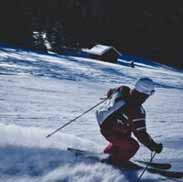Chronic Kidney Disease Flashcards, test questions and answers
Discover flashcards, test exam answers, and assignments to help you learn more about Chronic Kidney Disease and other subjects. Don’t miss the chance to use them for more effective college education. Use our database of questions and answers on Chronic Kidney Disease and get quick solutions for your test.
What is Chronic Kidney Disease?
Chronic Kidney Disease (CKD) is a long-term condition that affects the kidneys’ ability to function properly. It is characterized by the gradual loss of kidney function over time, and if left untreated can lead to end-stage renal failure, resulting in dialysis or transplantation. CKD can affect people of all ages, but it is more common among adults age 60 and older.There are many risk factors for developing CKD including diabetes, high blood pressure, heart disease, obesity, smoking, certain medications and family history. In some cases there may be no identifiable cause. Symptoms of CKD include fatigue and weakness, swelling in hands or feet due to fluid retention; foamy urine; dry skin; headaches; nausea and vomiting; changes in appetite; difficulty concentrating; shortness of breath during exertion or when lying down flat on one’s back (orthopnea); chest pain or palpitations due to anemia or electrolyte imbalances; muscle cramps at night due to magnesium deficiency and sleep disturbances from elevated levels of phosphorus in the bloodstream (hyperphosphatemia).Treatment for chronic kidney disease includes lifestyle changes such as dietary modifications like reducing salt intake and increasing potassium intake while avoiding processed foods with high amounts of sugar/sodium/preservatives as well as reducing alcohol consumption. Medications such as antihypertensives that lower blood pressure can help reduce the strain on your kidneys while also decreasing other cardiovascular risks associated with hypertension. Additionally supplements such as omega-3 fatty acids have been found beneficial because they decrease inflammation throughout the body which can help protect against further damage caused by CKD. Dialysis may become necessary if severe enough damage has occurred but this should only be considered after lifestyle modifications have proven ineffective at managing symptoms & slowing progression of the disease process itself Other treatment options include stem cell therapy & transplantation depending upon severity & stage . It is important for those affected by chronic kidney disease to closely monitor their diet & medication regimen in order maintain good health outcomes & prevent any further deterioration or suddent declines in renal functioning capacity . Regular check ups with doctor are strongly recommended so that appropriate interventions can be taken before problems arise . If you suspect you might have signs related to Chronic Kidney Disease , please contact your healthcare provider right away .










